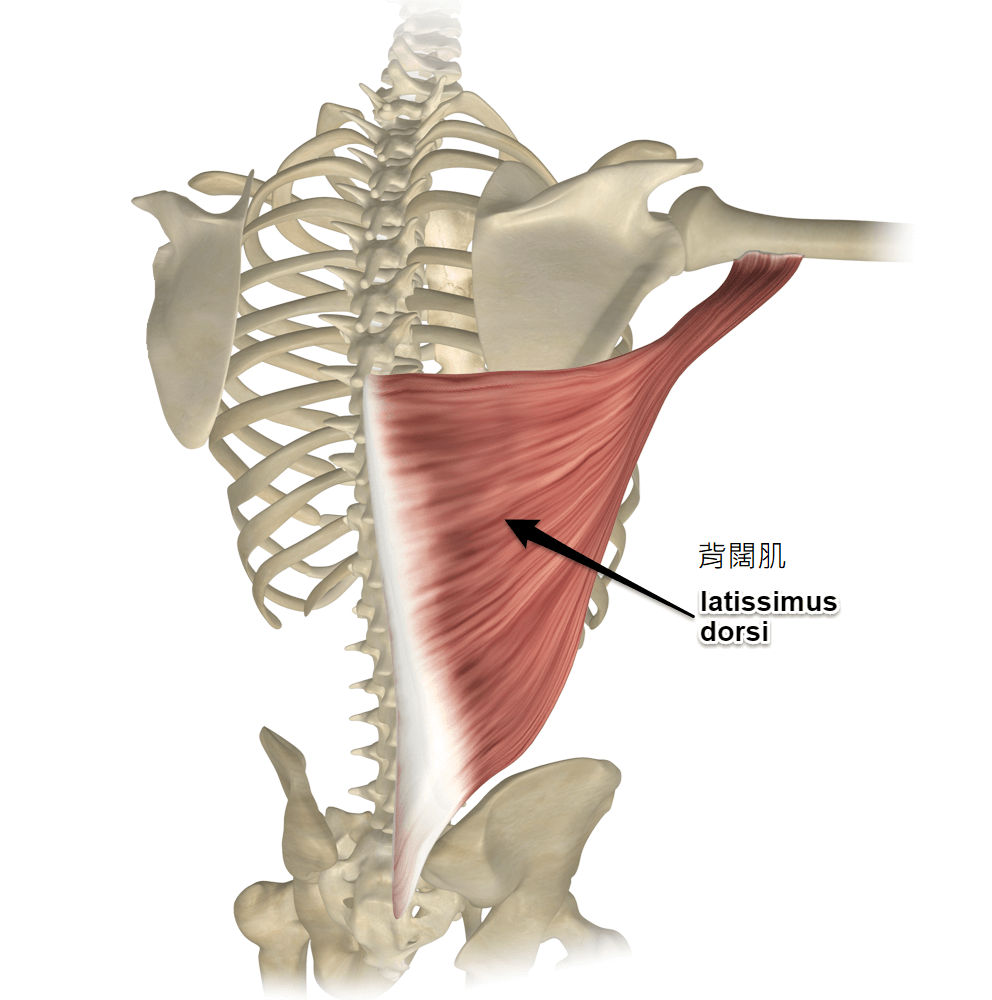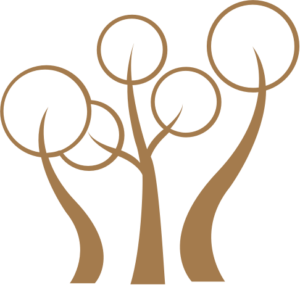Latissimus Dorsi 背闊肌 [國] – T

中文
背闊肌(Latissimus dorsi)
背闊肌位於背部,是身體最寬的肌肉之一,呈大型三角形。常見於游泳、引體向上等動作中大量參與,亦是輔助呼吸的肌肉之一。名稱來自拉丁語:Latissimus(寬)、dorsi(背)。
起點(Origins)
- 胸腰椎腱膜(thoracolumbar aponeurosis)
- T7–L5 棘突(spinous processes)
- 骶骨(sacrum)
- 髂骨嵴(crest of the ilium)
- 肩胛骨下角(inferior angle of scapula)
止點(Insertion)
肱骨二頭肌溝(bicipital groove / intertubercular sulcus)。
功能(Functions)
- 作為輔助呼吸肌:
- 吸氣時:擴大胸腔周徑,協助空氣進入肺部。
- 呼氣時:減小胸腔周徑,協助排出空氣。
- 上肢動作:上臂內收、內旋與伸展,將手臂向後向下拉向髖部。
姿勢觀察
若胸肩過度發達而背闊肌較弱,可能出現駝背傾向;強化背闊肌與對齊可改善上背穩定。
背闊肌(Latissimus dorsi)
背闊肌位於背部,是身體最寬的肌肉之一,呈大型三角形。常見於游泳、引體向上等動作中大量參與,亦是輔助呼吸的肌肉之一。名稱來自拉丁語:Latissimus(寬)、dorsi(背)。
起點(Origins)
- 胸腰椎腱膜(thoracolumbar aponeurosis)
- T7–L5 棘突(spinous processes)
- 骶骨(sacrum)
- 髂骨嵴(crest of the ilium)
- 肩胛骨下角(inferior angle of scapula)
止點(Insertion)
肱骨二頭肌溝(bicipital groove / intertubercular sulcus)。
功能(Functions)
- 作為輔助呼吸肌:
- 吸氣時:擴大胸腔周徑,協助空氣進入肺部。
- 呼氣時:減小胸腔周徑,協助排出空氣。
- 上肢動作:上臂內收、內旋與伸展,將手臂向後向下拉向髖部。
姿勢觀察
若胸肩過度發達而背闊肌較弱,可能出現駝背傾向;強化背闊肌與對齊可改善上背穩定。
English
Latissimus Dorsi
The Latissimus dorsi, which is located in the back, is one of the widest muscles in the body. It has a large, triangular shape and works when you do exercises such as swimming and pull-ups. The latissimus dorsi is also one of the muscles that help you with breathing. The name of the latissimus dorsi muscle describes its size and location. Latissimus comes from the Latin word “latus” meaning wide, and dorsi comes from the Latin word “dorsum” meaning back.
Origin
- thoracolumbar aponeurosis (fancy way of saying a common tendinous sheath). It connects the attachments to the areas below with the exception of the inferior angle of the scapula.
- T7-L5 – on the spinous processes (the parts that stick out that we can feel on our back).
- sacrum
- crest of the ilium (top back portion of the pelvis)
- inferior (bottom) angle of the scapula
Insertion
- bicipital groove – A divot in the bone that the biceps tendon lays in.
Function of Latissimus Dorsi
The latissimus dorsi is one of the accessory breathing muscles. When you inhale, your lats will enhance the movements of the trunk by expanding the circumference of your rib cage so that more air can enter your lungs.
When you exhale, the latissimus dorsi will decrease the circumference of the ribcage to make it easier for the lungs to push air out.
The latissimus dorsi performs other functions as well, they adduct, rotate, and extend the arms and pull them back and downward towards the hips. If someone has an overdeveloped chest and shoulders, but weak lats, this function of the muscle is visible as the person will have a hunched-over appearance.

